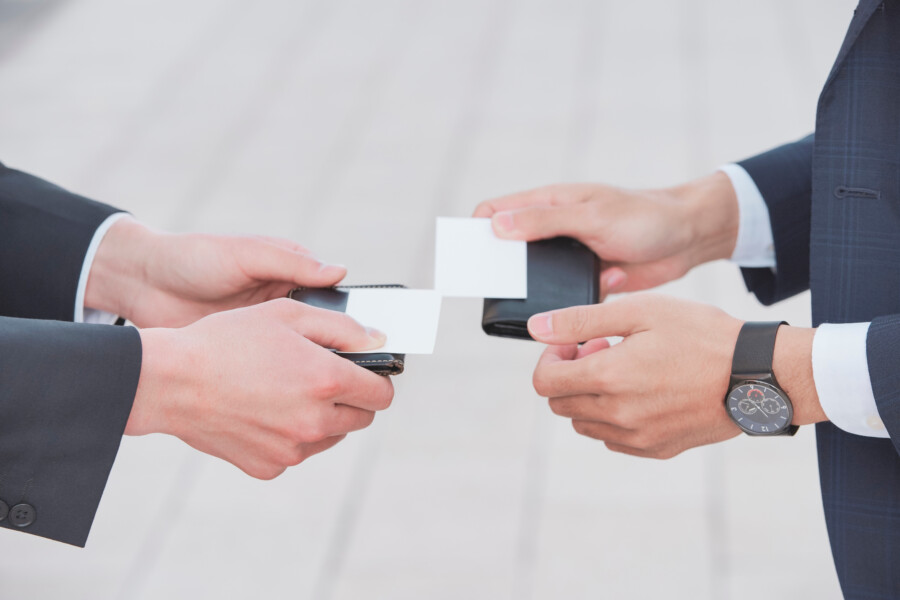
Business Cards in Japan: The Unspoken Design Rules of Meishi Culture
In many countries, a business card is a handy piece of paper that provides contact information and a snapshot of one’s professional identity. In Japan, however, the exchange of business cards—known as meishi koukan—carries far greater weight. A single rectangular card represents not just your name and title, but also your organization, your reputation, and your respect for the person you are meeting. From the moment you hand over your card to the way you receive someone else’s, there are unspoken guidelines to follow. The card itself, too, has its own set of design rules that blend tradition, practicality, and a modern sense of style.
This article explores the world of meishi—the Japanese business card—by shining light on its historical background, the etiquette involved in exchanging it, and the design practices that help business professionals make a lasting impression.
A Brief History of Meishi
The custom of exchanging meishi is rooted in Japan’s history of politeness, hierarchy, and social harmony. Although similar practices exist in other parts of the world, the Japanese meishi tradition is distinct because of the weight it places on mutual respect and formality. Originally, the concept of personal calling cards can be traced back to 15th-century China, where literati would present cards with their names. Over centuries, Japanese merchants and officials adopted a similar approach to announce themselves and their businesses.
It was during the Meiji era (1868–1912) that Western influence brought about significant changes in society, including the way people exchanged personal information. As international trade and diplomacy expanded, the need for a standardized method of introduction became clear. The business card provided a concise summary of who you were and what role you played—essential in a country where professional roles often define social standing. By the early 20th century, carrying and exchanging meishi in business and official settings had become nearly mandatory.
The Art of Exchanging Cards

In Japan, the exchange of meishi goes beyond a casual handshake; it follows a carefully orchestrated ritual that conveys respect and acknowledges hierarchy. When two individuals meet, they usually bow slightly before offering their cards. The card is held by the corners with both hands, facing the recipient so the text is readable immediately. Eye contact and a polite greeting often accompany this gesture.
Once you receive a card, it is important to take a moment to read it, acknowledging the person’s name, title, and affiliation. Never stuff it into a pocket or wallet right away; this could be interpreted as dismissive. Instead, place it on a small cardholder or gently on the table in front of you. If you’re in a business meeting, you might arrange the cards on the table according to seating order, making sure you remember each person’s name and position. The entire process is meant to show that you value the person’s identity and status.
Key Elements of Meishi Design
Just as the act of exchanging meishi is steeped in tradition, the design of the card itself reflects both cultural norms and contemporary style. Below are several design elements that commonly feature in Japanese business cards.
Simplicity and Clarity
Many meishi adhere to a minimalistic aesthetic. The text is typically printed on a white or light background with a simple typeface, ensuring that the information is legible at a glance. While creative layouts and color schemes are becoming more acceptable in certain industries, the emphasis still tends to be on clarity. Japanese script—usually in the form of kanji for names—takes precedence, sometimes complemented by phonetic guides (furigana) to help the reader pronounce less common characters.
Bilingual Layouts
For professionals who work with international clients, a bilingual layout is fairly standard. One side of the card is usually in Japanese, and the other side in English. This not only reflects practicality but also shows cultural sensitivity, making it easy for foreign clients or partners to read and remember the cardholder’s details.
Hierarchy of Information
Japanese society places significant importance on professional roles and affiliations. As a result, meishi typically highlight one’s position and company name. Titles often appear just below the person’s name in a slightly smaller font size. Contact details—phone numbers, email addresses, and sometimes social media handles—are arranged systematically. Some industries might place website URLs or QR codes on the card to provide quick access to portfolios or additional information. However, these elements are rarely given priority over the essential name-and-title details.
Company Logo and Visual Identity
In a country where brand reputation is a key driver of professional relationships, a company logo is usually displayed prominently. Careful thought is also given to color schemes and typography to ensure consistency with the organization’s identity. Even with a growing trend toward creative card designs in younger, tech-savvy startups, the underlying principle of subtlety remains strong.
Cultural Sensitivity and Etiquette
For foreigners doing business in Japan, understanding meishi etiquette is almost as important as knowing your product or service. Here are a few nuanced points that often go overlooked:
- Respect for Hierarchy: When handing over cards, if you know your counterpart is higher in rank, you should present your card at a slightly lower position relative to theirs.
- Language Considerations: Including Japanese text shows respect and makes a better impression on your Japanese counterparts. It also helps them avoid confusion when reading your name and title.
- Timing Matters: The exchange of meishi typically happens at the very start of a meeting. Waiting too long can lead to awkwardness or signal disinterest.
- Maintaining Cards: Keep your meishi clean and crisp. A crumpled or bent card can be perceived as neglectful. Always have enough cards available—you don’t want to run out in the middle of introductions.
- Business Card Holders: In Japan, carrying a dedicated cardholder is the norm. This small accessory helps keep your cards in pristine condition and demonstrates your preparedness.
Looking to the Future
In an increasingly digital world, some professionals might wonder if the practice of exchanging physical cards will fade. Japan’s devotion to formal etiquette, however, suggests that the meishi ritual won’t vanish anytime soon. Instead, we’re seeing a gradual shift toward more interactive and high-tech designs. QR codes and NFC chips can direct new contacts to online portfolios, social media profiles, or mobile applications. Eco-friendly printing methods and unique materials—such as washi paper or bamboo—are also gaining popularity, reflecting growing environmental awareness.
Despite these innovations, the core value of meishi remains unchanged: respect and recognition. By carefully considering the presentation, clarity, and cultural nuances of your business card, you signal that you appreciate the foundations of Japanese business culture. This thoughtful approach often opens doors to deeper conversations and more fruitful collaborations.
Conclusion
While the business card may seem like a small detail, it carries immense significance in Japan’s professional world. The ritualistic exchange is a moment to establish mutual respect and acknowledge the roles each person brings to the table. The card’s design—a balanced blend of tradition, functionality, and modern style—mirrors the broader Japanese ethos of harmony and innovation.
For anyone looking to succeed in Japanese business settings, mastering the art of the meishi is a vital step. From the precision of your bow to the clarity of your card’s layout, each aspect speaks volumes about who you are and how you conduct business. With respect, preparedness, and attention to detail, you’ll not only make a favorable first impression but also build a foundation for lasting professional relationships.
Get Your Japanese Design Reviewed →












